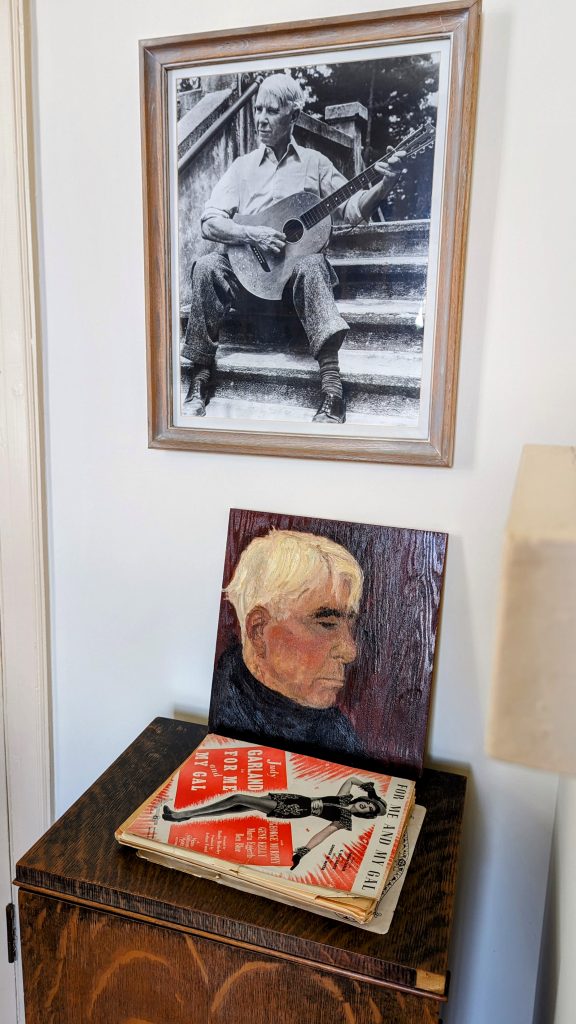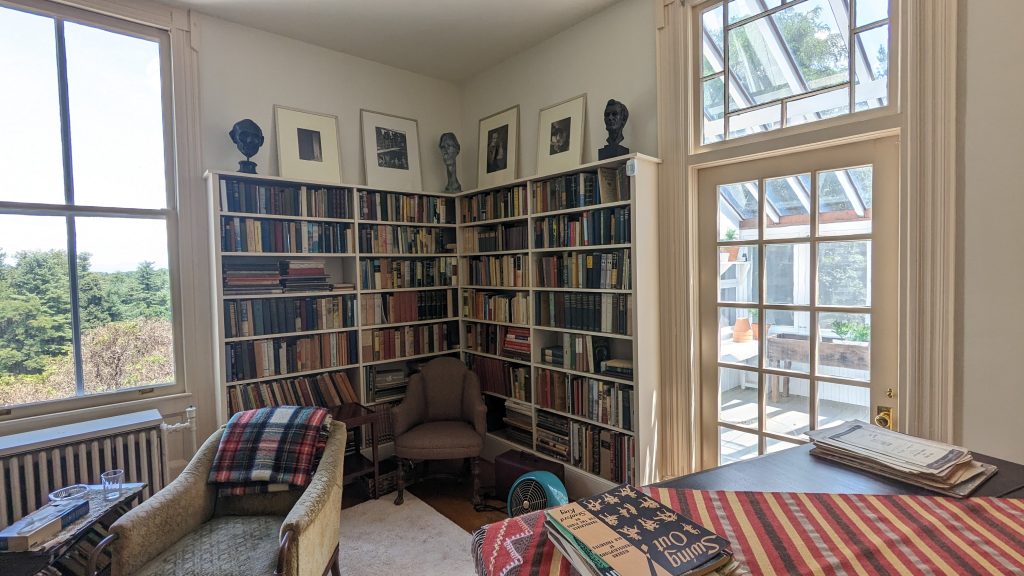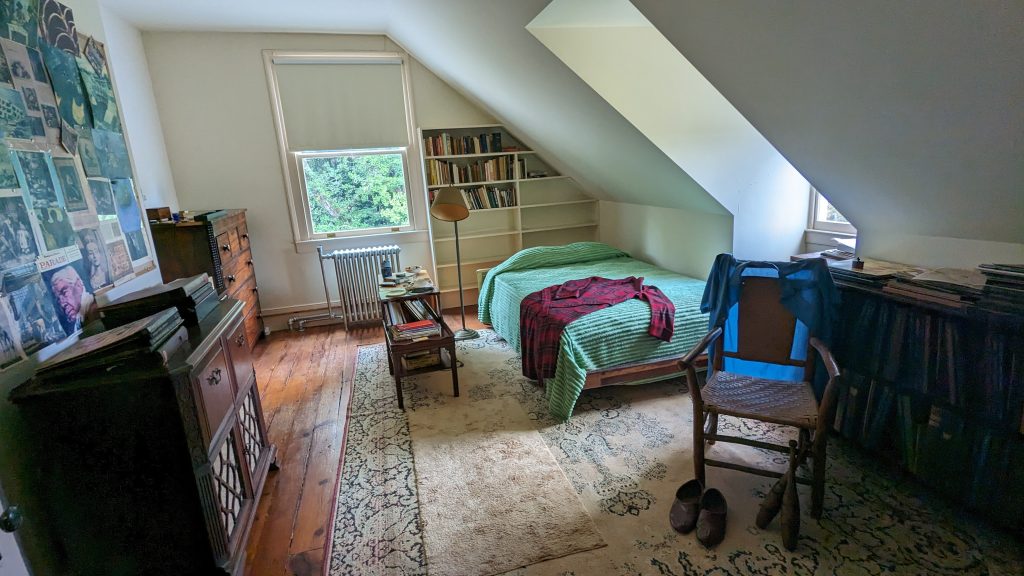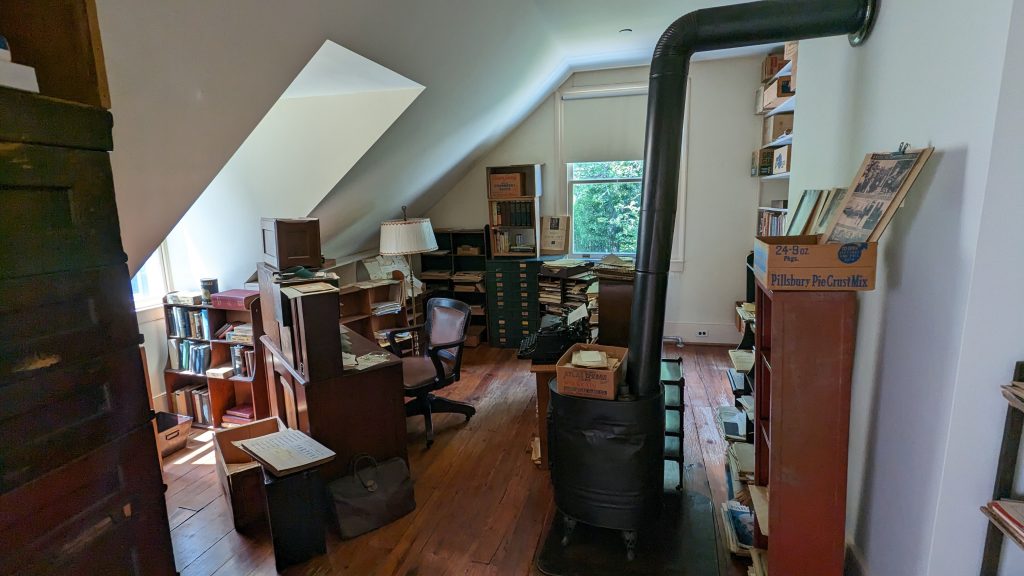Carl Sandburg was a major poet of the early twentieth century, publishing more than 15 collections and winning two Pulitzer Prizes for Poetry, becoming known in his lifetime as the “Poet of the People.”
But he is perhaps equally well-known for his biography of Abraham Lincoln, which also won the Pulitzer Prize for History in 1940 for his four-volume Abraham Lincoln: The War Years.
Sandburg also wrote Abraham Lincoln: The Prairie Years, a two-volume biography, in 1926, and finally condensed all six volumes into a one-volume edition that was published in 1954.
This edition became the de facto primary mid-century work on Lincoln, especially for schoolchildren in America. Collectively, his works (and works adapted from or inspired by his efforts, like Robert E. Sherwood’s 1938 Pulitzer Prize-winning play, Abe Lincoln in Illinois) are estimated to have been read by more people than any other works on our 16th President.
Sandburg also collected American folk songs, which he published in The American Songbag (1927), and loved to sing those tunes and many of his own while playing his guitar.
He also wrote nearly a dozen children’s books, including Rootabaga Stories which was published in 1922. If that’s not enough, he published a novel, as well.

His litany of awards doesn’t end with his three Pulitzer Prizes. Sandburg also won a Grammy Award in 1959 for Best Performance – Documentary Or Spoken Word for his recording of Aaron Copland’s Lincoln Portrait with the New York Philharmonic.
Sandburg was honored by Lyndon Johnson with the Presidential Medal of Freedom, but was most proud of being recognized by the NAACP in 1965 for his coverage of the 1919 Chicago race riots and for his “life-long struggle to extend the frontiers of social justice.”

In 1945, the Sandburg family moved from Michigan to a 245-acre farm in Flat Rock, N.C., near Hendersonville. In 1968, a year after Sandburg’s death, his wife sold their home to the National Park Service.
So it is today that visitors can explore Connemara, the Carl Sandburg Home National Historic Site, where the family lived from 1945 until shortly after the poet’s death in 1967.
With much of the furnishings intact (including Sandburg’s half-smoked cigar in the dining room table ashtray), the home offers visitors the opportunity to learn about Sandburg’s rich literary and historical legacy.
And to also learn about the goats.
You see, Sandburg’s wife Lilian (known as Paula), a politically-active University of Chicago graduate and one-time Latin teacher, called by Sandburg his “dream girl,” was a breeder of champion goats, winning prizes at state fairs across the country and establishing herself as a nationally-recognized expert in the field (so to speak) of dairy goats.
The Sandburgs’ move to Flat Rock was initiated by a desire for milder weather, but also for a need for more acreage for Paula’s growing herd.

Eventually, her herd would number more than 200, and her doe “Jennifer II” became the all-breed American champion for milk production and world champion for the Toggenburg breed. The doe, weighing 170 pounds, produced 5,750 pounds of milk in 305 days. Descendants of her herd remain today on the farm.

In addition to her meticulously-recorded dairy goat production, Paula Sandberg also tended to a flock of three daughters, one who was developmentally-disabled, and another who was divorced and living in the N.C. home with her two children for many of the Flat Rock years. As busy as Carl was, he always made time for family dinner where he would read his latest work or encourage conversation about political and societal topics.
And it was Paula who handled much of the correspondence and business for her prodigiously productive husband Carl, leaving him to spend his hours with pen and paper in hand sitting in the sun on a flat rock adjacent to the house, or burning the midnight oil in his study only to finally make his way to bed as the rest of the house was rising at dawn to attend to the chores of farm life.
It was Paula who enabled Carl to meet the three goals that he set prior to moving to Flat Rock: to eat regular, to stay out of jail, and to have what he wrote published.
So it was on Sandburg’s deathbed that the poet’s last words were not the lines of a new poem about America as he had once predicted, but a single word: “Paula.”






